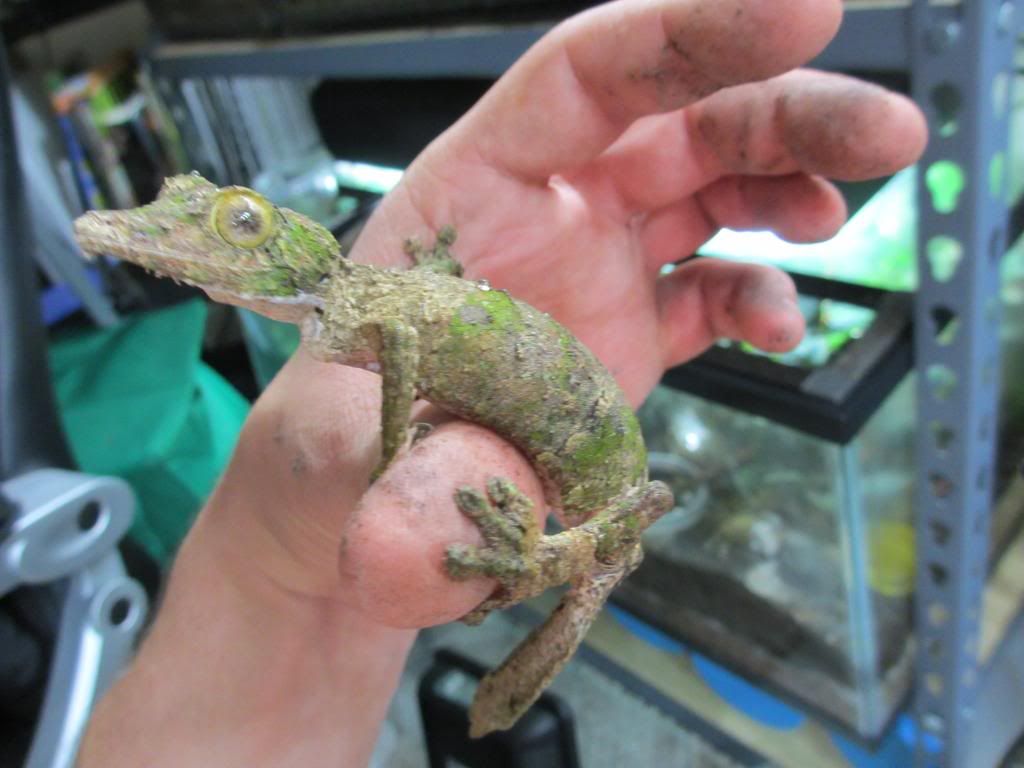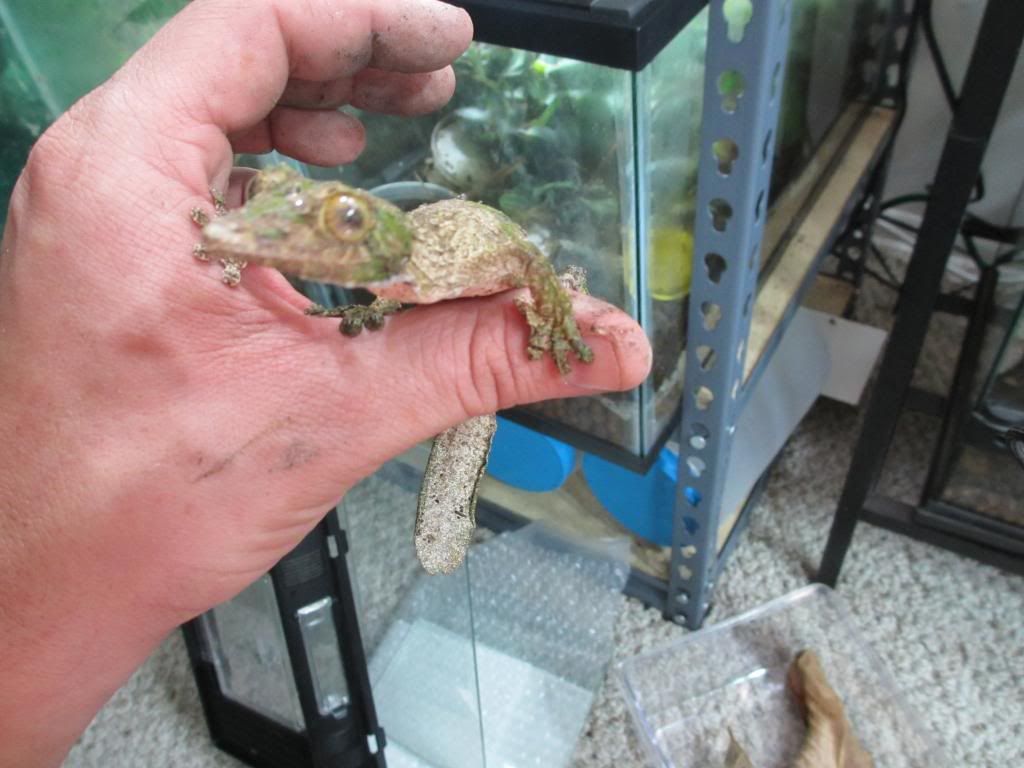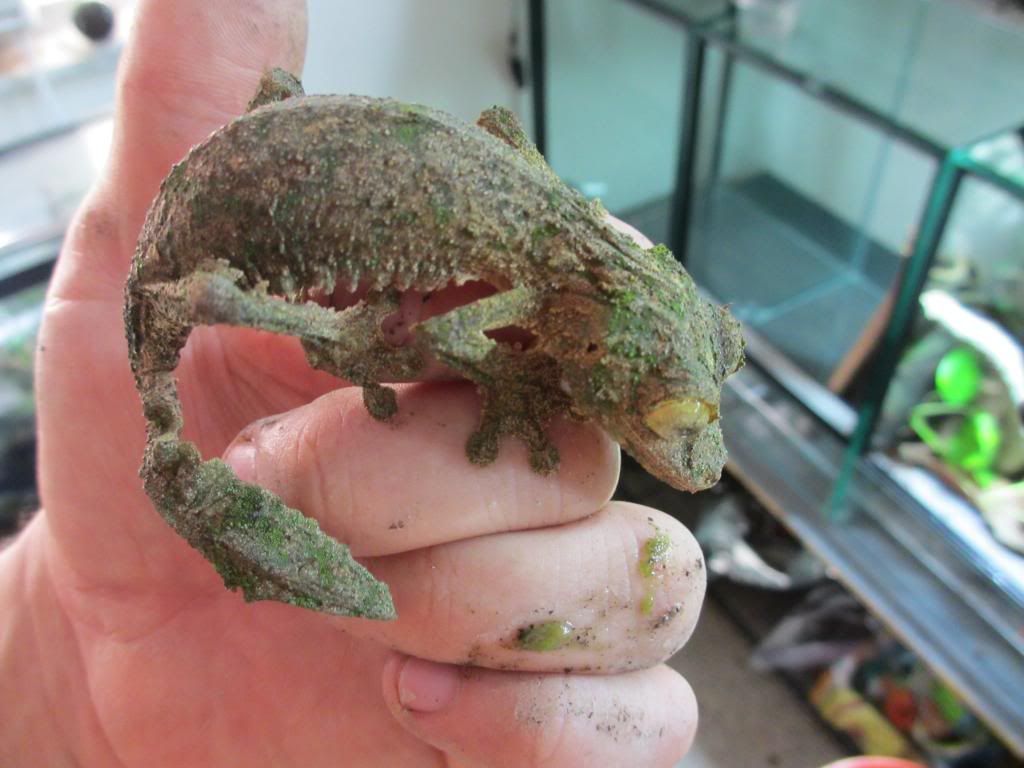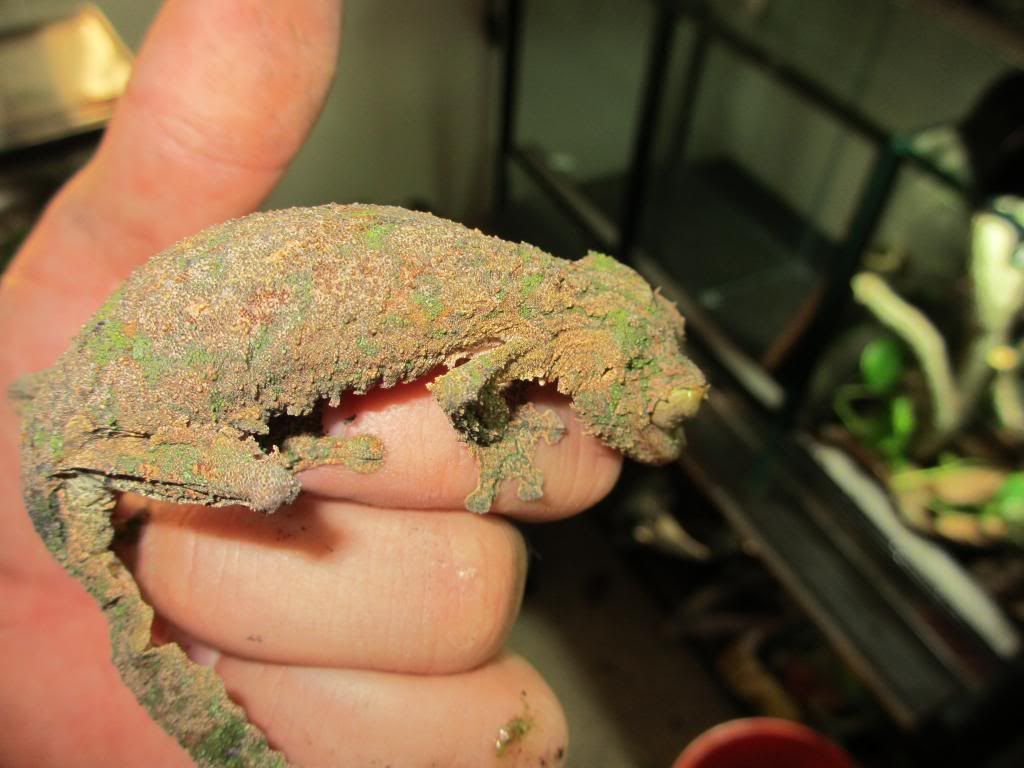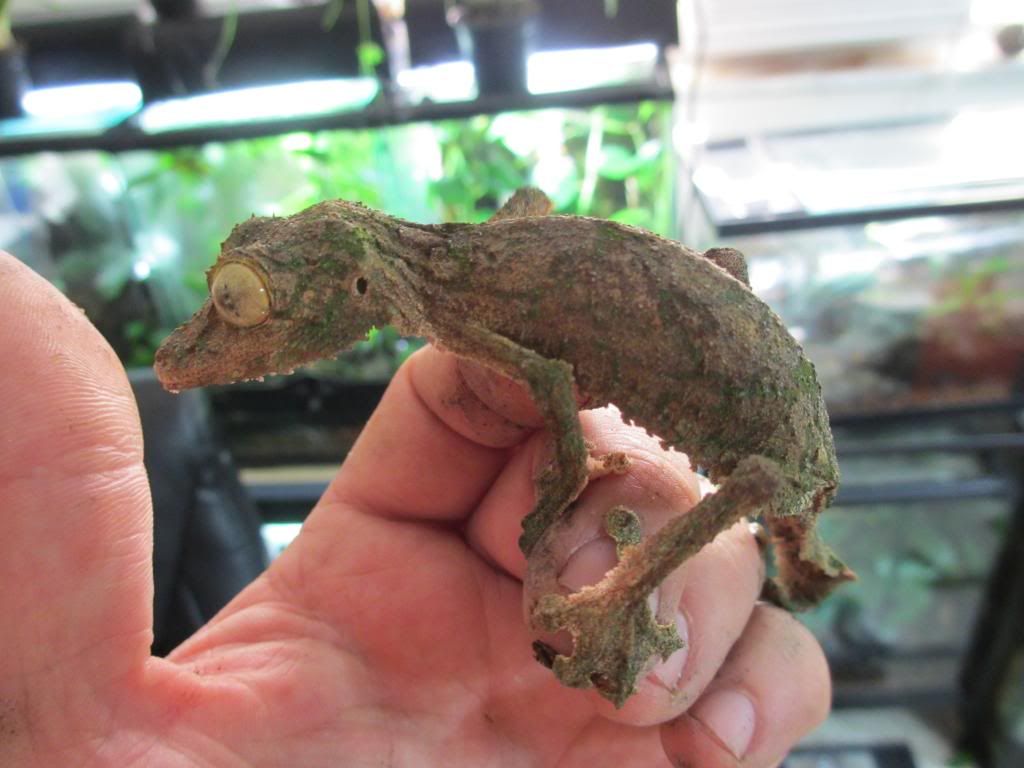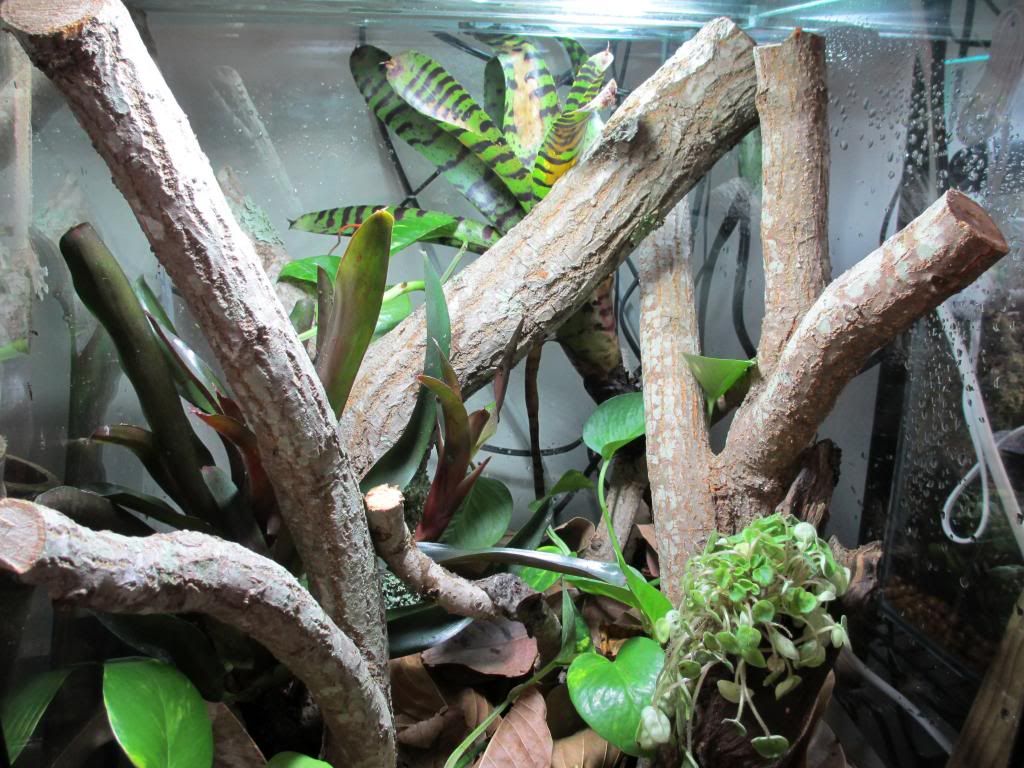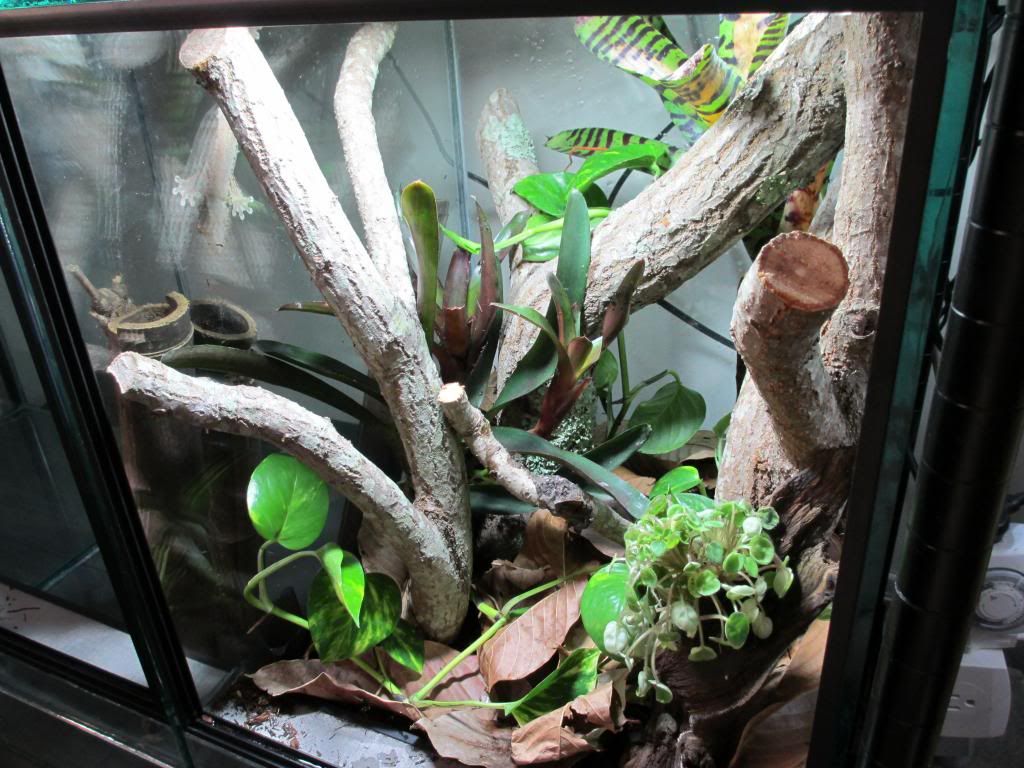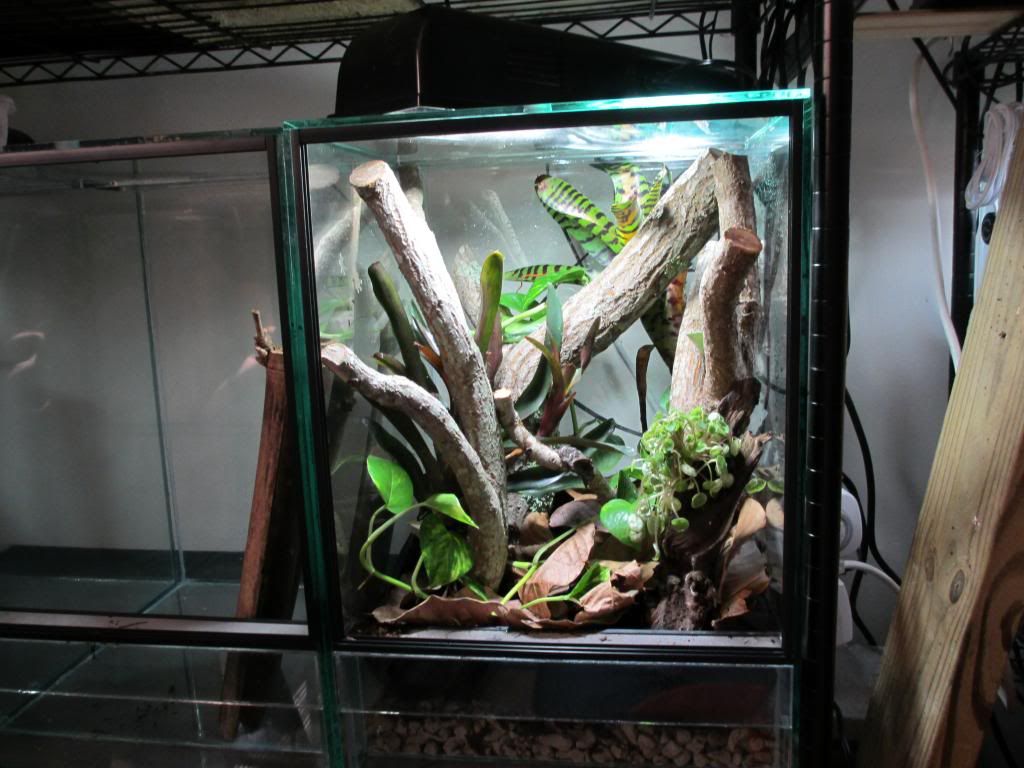Here's a caresheet I put together for personal use from my own experience with this species; but if anyone has anything to add please chime in....
Uroplatus sikorae
Mossy Leaf-tailed Gecko
Basic Information
Uroplatus sikorae is a nocturnal, arboreal gecko that is endemic to the forests of Madagascar. Sikorae can reaches lengths of roughly 6-8 inches in length, can have a captive lifespan of 10-15 years, and draw their name from the leaf like build of their tails and the mossy like colouration of their skin. These geckos will spend the daylight hours resting vertically along tree trunks or branches, and will venture forth during the night to hunt for their prey. And interesting feature of the sikorae is the dermal flap that surrounds their body, which they will lay flat against the tree bark in order to break up their outline and help avoid predators. Also like the chameleons native to Madagascar, the sikorae can change the colour of its skin in order to better camouflage itself against its background.
Housing
Sikorae require a rather large enclosure for their size, with the vertical space being most important. A pair or trio can be appropriately housed in an enclosure measuring 18”x18”x24”, as this will provide adequate space for the geckos to flourish. It is best not to house males together in order to avoid any fighting over territory or food (although it has been shown that with enough space and food males can tolerate each other), but as stated previously a male may be housed with one or multiple females provided there is adequate space.
The enclosure should be heated to roughly 77-85 degrees F during the daytime hours and can be dropped to 70-74 degrees F during night time hours. This can be achieved by using a full spectrum light source that emits UVB during daytime hours (UVB has been shown to be beneficial to Uroplatus), and a red or blue night time light can be used to achieve the necessary heat requirements at night. It is also important to keep the humidity level at 75-100% humidity, as these geckos originate from an area that receives large amounts of annual rainfall. Keeping a higher humidity can be achieved by misting the enclosure once or twice daily or as needed. For substrate, it is best to use something such as peat moss, soil, or a sand/soil mixture as the geckos will lay their eggs on the floor of the enclosure, and having a heartier substrate will help you to keep humidity high.
Another very important feature of an enclosure for a sikorae is the tank decor. One must strive to create as natural an environment as possible for these geckos in order to avoid stressing them. It is recommended to provide both vertically and diagonally oriented branches throughout the enclosure, as the leaf tails spend most of the daylight hours sleeping in a vertical position on a branch or log. Live plants (such as pothos or philodendrons) are recommended as opposed to artificial plants, as they will help to raise the humidity of the enclosure and there is very little chance that the geckos will trample or ruin them.
Diet
Mossy Leaf-tailed geckos are insectivores and thrive on a diet of crickets, roaches, mealworms, or most other commercially available feeders. Feeders should be coated with a calcium and multivitamin supplement in order to ensure that the geckos are kept properly nourished. For gravid females it is best to place a small dish containing calcium in the enclosure, in order to ensure they are getting proper calcium levels for egg production.
Breeding / Egg Incubation
Breeding Mossy leaf tails can actually occur quite easily and naturally when they are housed together year round. You can expect copulation to occur in the early spring to late summer months when the temperatures are a little warmer, and females will retain the males sperm allowing her to lay clutches of 1-2 eggs every 4-6 weeks. Females should be expected to lay anywhere from 3-5 clutches per year. She will deposit the eggs in the substrate or in a plant that may be in the enclosure, and will often times roll the eggs with her hind legs, making the substrate stick to the fresh eggs.
Once discovered, remove the eggs from the enclosure and place them in a container with a 1:1 ration of vermiculite (or whatever incubation medium you prefer), and heat them to 78 degrees F. Eggs should hatch within 60-90 days, and hatchlings should be kept in the same conditions as adults, but it is best to use an enclosure that measures 8”x8”x12”, until the gecko requires a size upgrade.
Handling
Mossy leaf tails should be handled as infrequently as possible in order to avoid stressing them out too much. This is especially true for hatchlings of this species as they are very fragile and delicate when young and can be injured very easily from a fall or squeeze from a handler.
